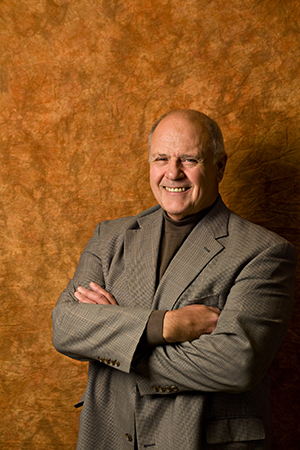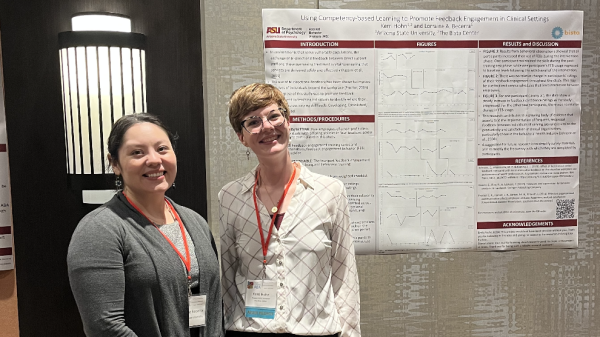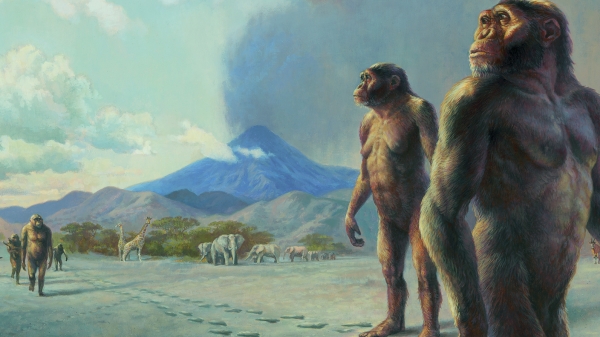Turning borderlands into an energy-water innovation zone
Engineers envision economic opportunity, growing communities, stronger security arising from ambitious plan

A bold proposal for the future of most of the nearly 2,000-mile stretch of land along the United States-Mexico border has been drawing attention.
The ambitious plan, called the Future Energy, Water, Industry and Education Park initiative (FEWIEP), details concepts for developing the borderlands by bringing energy and water resources, education, farming, business opportunities and jobs to the region.
This innovation zone would consist of a series of industrial parks, focusing on the infrastructure development to support the testing, production and deployment of technologies and systems to meet growing needs for energy, water and food in both Mexico and the U.S. Along with private business enterprises and public facilities, the energy and water corridor would also include research and education centers.
The idea comes from an informal consortium of about 30 engineers and scientists that includes Arizona State University Regents’ Professors Ronald Adrian and Carlos Castillo-Chavez.
Led by Luciano Castillo, the Kenninger Professor of Renewable Energy and Power Systems at Purdue University, the authors of the proposal foresee the project greening the desert through robust economic development and job creation in the borderlands that will, in the long term, help to control immigration across the border and solve security challenges in the vast region.
Adrian, a professor of mechanical and aerospace engineering in the Ira A. Fulton Schools of Engineering, discussed the growing interest in the plan and the outlook for moving it forward.

Ronald Adrian sees potential roles for ASU researchers in helping to fulfill the promise of the plan for an “Energy Corridor” spanning much of the U.S.-Mexico border area. Photo by Tom Story/ASU
Question: What is the primary mission of the project?
Answer: We want to see the border turned into a corridor that is rich in energy and water, which will attract businesses, investment and jobs and greatly expand agriculture. We envision creating long oasis-like stretches of development in the arid regions of the border areas. We essentially want to make the desert bloom with agriculture, industrial plants, jobs and opportunities while contributing to its security. We want both the United States and Mexico to be partners in creating the border project and enjoying its enormous benefits.
Q: What motivated a proposal for such a large-scale plan for the borderlands?
A: Our idea had its roots in the issue of border security. Our group thinks there is a smarter, more productive alternative. Why not provide opportunities for people near the border to improve their lives by developing an energy corridor that creates wealth-producing enterprises and jobs, and thereby increases the value of region?
Q: Do you see a direct role in all of this for ASU?
A: The original white paper requested $1.1 billion dollars to conduct research needed for many aspects of the project, perform extensive planning to minimize cost and maximize social benefit and establish research/educational centers. This is a perfect fit for ASU, with its strong focus on innovation, inclusion, serving communities and Arizona’s long southern border. ASU has research groups working in many areas that can provide the expertise and solutions the master-planning effort needs. I hope ASU will become a strong member of the consortium and participate in big research projects and an educational network along the border for worker qualification and job training.
Q: Why focus a plan for economic growth in the border region on energy development?
A: The borderlands are rich in untapped energy sources. The solar irradiance and windy conditions there provide some of the best sites in the world for producing solar energy and wind energy.
Q: How would the project bring more security to the region?
A: It offers a humanitarian approach to controlling immigration by offering jobs and opportunities without crossing the border.
The owners of the facilities in the energy and water corridor would take significant steps to protect their properties. As is done in other industrial zones, companies and state and federal agencies would monitor power transmission, gas and water facilities.
Q: What challenges are there to building all these different facilities in the border region’s desert environment?
A: We are talking about building energy infrastructure for solar power, wind power, natural gas, water resources and electrical transmission lines. That is a major undertaking. The biggest challenges would be costs, accessing the land — two-thirds of which is privately owned — and obtaining building permits. The power generation, electrical transmission and water supply systems are essentially utilities that are subject to regulation by the surrounding states and two different countries, each having different regulations in place. Negotiating a set of common regulations will be complicated.
Q: You will need more than engineers and scientists to buy into this, right?
A: We introduced this idea to the public only about three months ago, but it has already attracted a good amount of attention. We are getting inquiries and feedback from people with expertise in a lot of different areas, including business, investment, experts in infrastructure financing, people in government and the general public. The initiative needs support from all of them, and advice from many nonengineering experts such as economists, public policy experts, sociologists and environmentalists.
Read an expanded version of this interview.
The full proposal is detailed in the white paper, Future Energy, Water, Industry and Education Park (FEWIEP): A Secure and Permanent U.S.-Mexico Border Solution.
Top photo: A consortium of prominent U.S. engineers and scientists — including two Arizona State University faculty members — propose developing extensive solar and wind energy, water and natural gas infrastructure throughout the U.S.-Mexico borderlands. They envision the Future Energy, Water, Industry and Education Park project bringing energy resources and economic prosperity to the region that will help to significantly ease border security problems. Illustration courtesy of Purdue University
More Science and technology

Miss Arizona, computer science major wants to inspire children to combine code and creativity
Editor’s note: This story is part of a series of profiles of notable spring 2024 graduates. “It’s bittersweet.” That’s how Tiffany Ticlo describes reaching this milestone. In May, she will graduate…

ASU applied behavior analysis program recognized in Four Corners region
Helping students with learning disabilities succeed in school and modeling effective communication skills are just two examples of how applied behavioral analysis improves lives. Since launching…

50 years later, international experts discuss importance of 'Lucy' discovery at ASU symposium
“Lucy” is one of the most famous human ancestor fossils of all time. Discovered by ASU Institute of Human Origins Founding Director Donald Johanson in 1974, in the deserts of Hadar, Ethiopia, the…